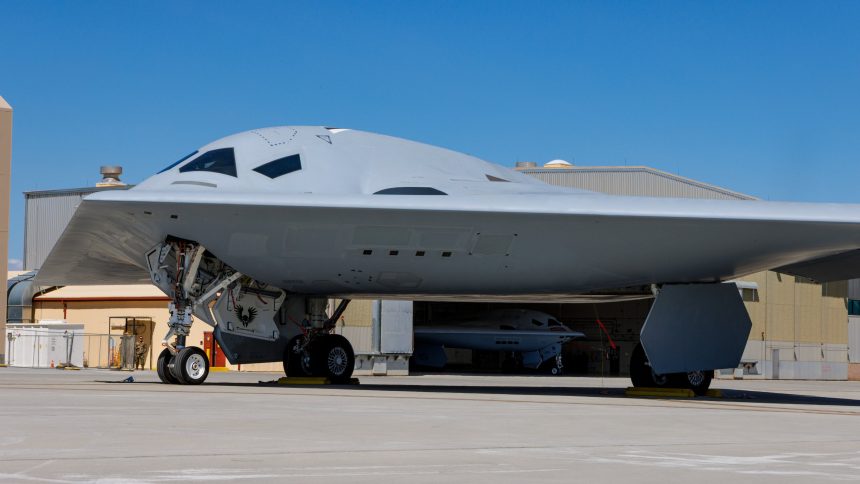The service announced the arrival of the second B-21 bomber, possibly nicknamed “Spartan,” at Edwards AFB at the end of its first flight to join the test fleet.
The U.S. Air Force has released photos of the second B-21 Raider stealth bomber, offering a clear look yet at the service’s next-generation long-range strike platform during the first flight. The images, showing the second aircraft during its flight to Edwards Air Force Base, California, highlight the progress of the secretive program into the next phase of testing.
The photos, taken on Sep. 11, 2025, capture the aircraft throughout the flight that took it from Air Force Plant 42 in Palmdale, California, to Edwards AFB. Among these photos there is also the first photo showing the two B-21s together.
This second B-21, now joining the first bomber already undergoing evaluations at Edwards since November 2023, is production-representative and will be used to expand testing into weapons integration and sustainment assessments.
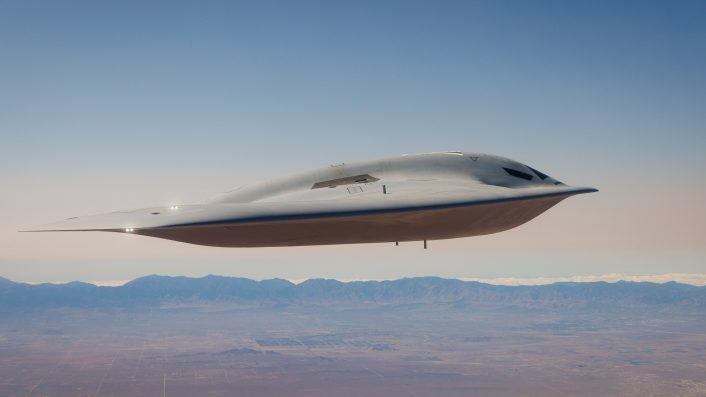
New Visual Insights Into the Raider
As we mentioned in our previous report about the first flight, the second aircraft was not equipped with the air data probe and trailing cone which are usually mounted on prototype aircraft as part of initial flight testing. With the first B-21 flying for almost two years, Northrop Grumman and the Air Force have possibly collected enough data and did not require the installation of this equipment on the aircraft.
However, some traits of standard initial flight testing still remain, such as the flight in landing configuration (at least in the beginning until the completion of the first checks) and the chase aircraft. Contrary to the first B-21, the second one did not feature the stylized Northrop Grumman Flight test badge, and the serial painted on the nose landing gear door.
However, while from the first photos to be released it appeared this B-21 did not receive a nickname, the photos from the arrival at Edwards show an interesting detail. In fact, the inside of the nose landing gear door shows a Spartan warrior helmet, possibly hinting that this airframe’s nickname is “Spartan.” The first aircraft, which can also be seen in a hangar in the background – the first photo of the two B-21s together, was named “Cerberus.”
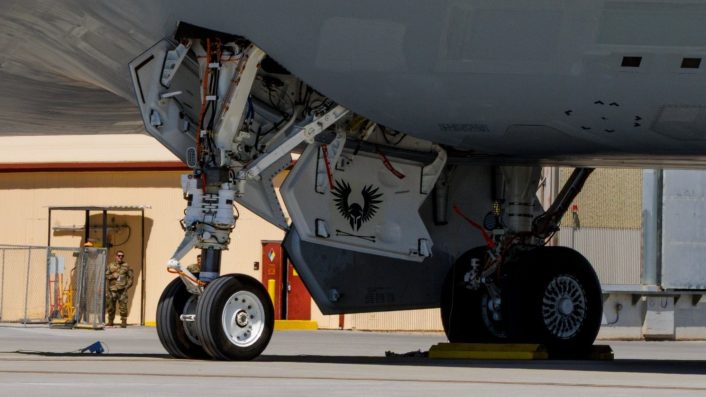
Significance of the Second Test Aircraft
The appearance of the second B-21 is more than symbolic. By adding another airframe to the test fleet, the Air Force can accelerate evaluation of mission systems and weapons, a point emphasized by senior officials.
“With the arrival of the second B-21 Raider, our flight test campaign gains substantial momentum,” said the Secretary of the Air Force Troy Meink. “We can now expedite critical evaluations of mission systems and weapons capabilities, directly supporting the strategic deterrence and combat effectiveness envisioned for this aircraft.”
Tail 2 on the ground at @EdwardsAFB! pic.twitter.com/bEehEWh0Vp
— General David Allvin (@OfficialCSAF) September 12, 2025
In fact, the service confirmed the addition of the second aircraft enables the progression into critical mission systems and weapon integration testing phases. The presence of multiple test aircraft at Edwards AFB also provides Air Force maintainers invaluable hands-on experience in managing simultaneous aircraft sustainment operations, testing the effectiveness of maintenance tools, technical data and the logistical processes that will support future operational squadrons, highlights the Air Force.
Chief of Staff Gen. David Allvin added that having multiple test aircraft accelerates the path to fielding: “By having more assets in the test environment, we bring this capability to our war fighters faster, demonstrating the urgency with which we’re tackling modernization.
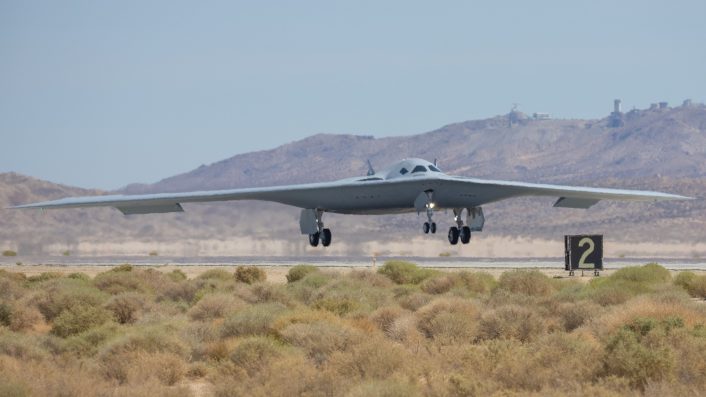
Strategic Role and Modernization Context
The B-21 Raider is designed to replace the aging B-1B Lancer and B-2 Spirit, while serving alongside the upgraded B-52J Stratofortress in a two-bomber fleet. Air Force Global Strike Command chief Gen. Thomas A. Bussiere recently called the Raider “the most exquisite, most technologically advanced airplane ever built,” noting that its introduction comes amid the challenge of deterring multiple nuclear-armed adversaries for the first time in U.S. history.
“The B-21 Raider program represents a cornerstone of our strategic nuclear modernization,” Allvin said. “The concurrent efforts in testing, sustainment preparation and infrastructure investments clearly illustrate our commitment to providing unmatched capabilities to deter and defeat threats well into the future.”
The Air Force has committed to acquiring at least 100 Raiders, though the final number remains classified. Ellsworth AFB in South Dakota is set to become the first operational base, with infrastructure work already underway.
Concurrent with the expanded flight-testing effort, fiscal year 2026 will see the launch of extensive military construction projects at all three designated B-21 main operating bases. Ellsworth AFB is already progressing rapidly on numerous infrastructure projects to ensure readiness when the aircraft arrive.
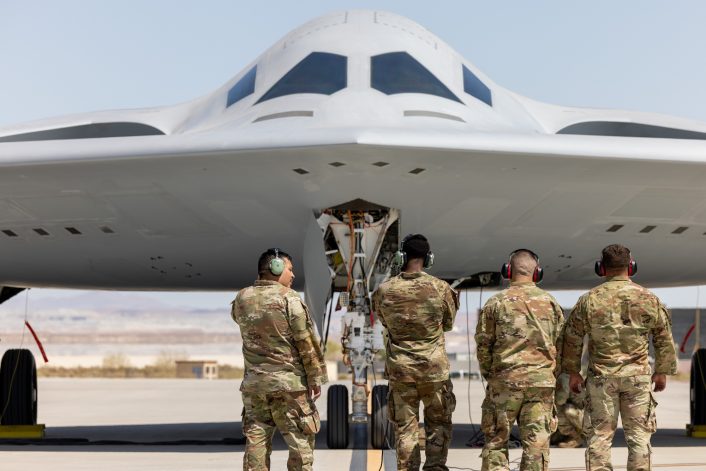
Production and Budget Expansion
The first flight of the second B-21 coincides with broader program developments. The Air Force’s fiscal year 2026 budget request includes $10.3 billion for the Raider, with $4.5 billion directed at expanding production capacity. Much of this work will be performed at Northrop Grumman’s Palmdale facility and at Tier 1 suppliers, including BAE Systems, Collins Aerospace, GKN Aerospace, Janicki Industries, Spirit AeroSystems, and Pratt & Whitney, which supplies the bomber’s still unknown engines.
Although exact production rates remain classified, independent assessments estimate a pace of 7–8 aircraft annually. Northrop Grumman has already absorbed a $477 million charge to adjust its processes to meet future demand.
Northrop Grumman was awarded the second low-rate initial production contract for the Raider late in 2024 and is now scaling the production to meet the service’s timeline, although recent reports have suggested that production is under budget and ahead of schedule.
A Glimpse Into the Future Bomber Force
For now, the newly released photographs provide both aviation enthusiasts and defense analysts with a rare chance to check the Raider’s lines and speculate on its capabilities. Beyond aesthetics, the images serve as a reminder of how tightly controlled information about the program remains, with only very few photos and details released so far.
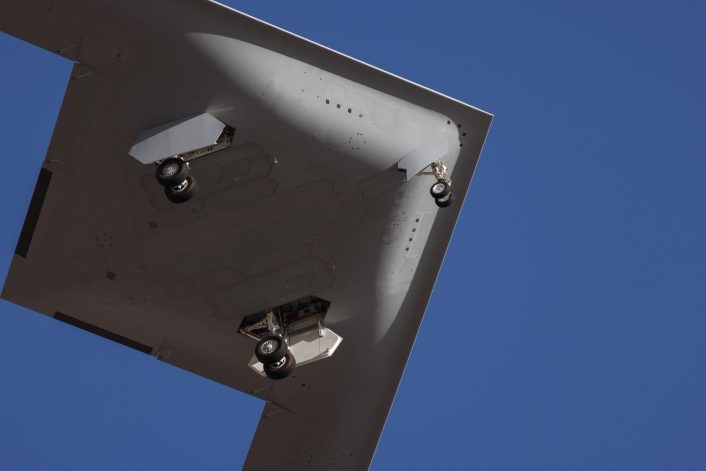
However, Northrop Grumman and the Air Force have often emphasized the B-21’s most important features are inside the aircraft and can’t be seen from the outside. In fact, the most significant innovations are embedded in the aircraft’s systems and materials rather than in radical aerodynamic changes.
As Gen. Bussiere noted, the B-21 is being developed not just for today’s needs but for an increasingly complex global security environment. With two aircraft now flying and more expected to join the test fleet in the coming years, the Air Force is steadily moving the Raider from secrecy into operational reality.

